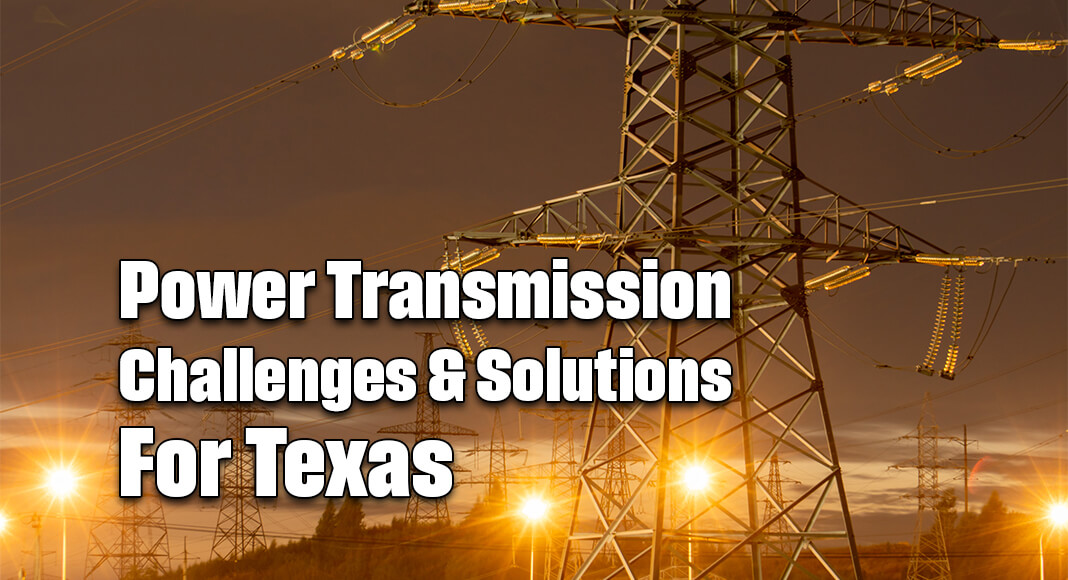
Texas Border Business
Texas Border Business
In a recent discussion on the future of Texas’s energy transmission needs, Daniel Silva, President and CEO of the Rio Grande Valley Partnership, and Dr. Ray Perryman, founder of the Perryman Group, shed light on Texas’s energy challenges and economic potential. The state’s impressive growth rate—creating one in five new U.S. jobs since February 2020—reflects a need for a robust infrastructure system. As Dr. Perryman pointed out, “Texas is growing in a way that even in addition to all the people and jobs…we’re growing in power-intensive sectors in a way that I don’t think anyone would’ve anticipated…It’s quite a dramatic thing.” This trend emphasizes a crucial challenge: Texas needs to address transmission to support its rapid development and avoid economic stagnation.
Silva emphasized the unique growth within the Rio Grande Valley, explaining that “adequate transmission is being brought all across the state because…it’s serviced well.” He highlighted the Rio Grande Valley’s role as an economic engine for Texas, noting that “we’re seeing mega projects in the Rio Grande Valley now” and that energy reliability has become a focal point for companies considering relocating to the region. “Inadequate energy could quickly become a barrier,” he said, stressing that power infrastructure must keep pace with the economic expansion taking place across Texas.
Dr. Perryman’s economic analysis, commissioned by the Rio Grande Valley Partnership, shows that failing to meet energy transmission milestones could lead to substantial economic losses by 2040. “Even in the lowest scenario, Texas would lose $9.7 billion in gross product and 40,000 jobs annually by 2040 if we don’t make these investments,” Perryman warned, adding that in the most demanding scenario, “we’re talking about a cumulative loss of $160 billion in gross product and nearly 700,000 job years.” The benefits of infrastructure investment are clear, he emphasized: “Investing $12.6 billion in transmission would yield a $160 billion increase in gross state product, a substantial rate of return.”
Silva outlined the creation of the Transmission Education Task Force, explaining that “the Rio Grande Valley Partnership took the reins…and created the task force to address energy transmission needs with utilities, generators, and other experts.” This task force will gather feedback and present the needs of businesses and residents to Texas lawmakers. Silva continued, “We’re the boots on the ground, the ears for local communities,” pointing to the necessity of local support for a mission that impacts the entire state.
Perryman underscored that while Texas generates more wind and solar power than any other state, “the bottom line is you have to get that power from where it is to where it’s needed, and that’s where transmission comes in.” He highlighted the geographic disparity between energy generation and demand, stating, “About 85% of our population lives east of Interstate 35, but much of the capacity to generate power is located west.” He said the existing infrastructure needs billions in upgrades, adding, “Even though we’re doing a lot, we’re not doing enough.”
The conversation also turned to Texas’s capacity to manage crises like the February 2021 winter storm, which affected public perception of Texas as a stable business hub. Silva remarked, “There was a lot of insecurity, and I think a little bit of a black eye on the state of Texas.” He explained that although the state has made strides in weatherizing power generation, “transmission needs improvement…to bring energy to the consumer.” To Silva, Texas’s quick recovery is evidence of the state’s resilience, but he acknowledged that infrastructure investment remains a key priority for local economic stability.
As Texas continues attracting energy-intensive industries such as chip manufacturing and data centers, Perryman noted that “some new development helps us because…it creates the incentive to build power plants to support it, but also gives us extra capacity in times of need.” However, this demand could become a double-edged sword, with Texas adjusting its electric market to incentivize infrastructure improvements. “Texas can generate the power, but we need the infrastructure to get it where it’s needed,” Perryman said.
The potential tax revenues from expanded transmission would significantly benefit state and local governments. “For the state government between now and 2040…it could add $2.4 billion, and for local governments, $4.6 billion,” Perryman calculated, pointing out that much of this revenue would support growing community needs and local services. He stressed that “the amount coming back relative to the investment needed shows this is a very positive development.”
When asked about the cost impact on Texas residents, Perryman explained, “We are going to have to cover that cost, but the vast majority will be paid by large users,” such as industrial power consumers. Spreading costs across multiple consumer tiers minimizes the effect on individuals. However, Perryman emphasized, “It’s a small increase in electric bills…and, in all probability, largely offset by the greater economic benefits.”
Education and advocacy remain crucial. Silva reinforced this point, describing the purpose of the Transmission Education Task Force as ensuring lawmakers understand that “we have the capacity, we have the capabilities, we have the opportunity…we just want to make sure that there are no barriers in place.” For Silva, the partnership is an essential advocate for businesses and residents, encouraging direct engagement with policymakers to influence future legislation.
Dr. Perryman echoed the importance of education, noting, “Everybody wants Texas to grow…but we need to make sure they understand just how critical this infrastructure is.” With Texas currently in a strong fiscal position, he remarked that now is the time for the state to invest in power transmission to secure its economic future. “Texas’s resources and opportunities are unbelievable, but it will take investments in many areas,” he concluded.
Silva left off on a note of optimism, asserting that Texas stands ready to meet this challenge. “We’re excited through the partnership to take on this initiative…to see our region and the state grow.” He reiterated the need for a solid foundation to sustain Texas’s momentum: “We have the opportunity. We need to ensure that barriers are mitigated.”

















